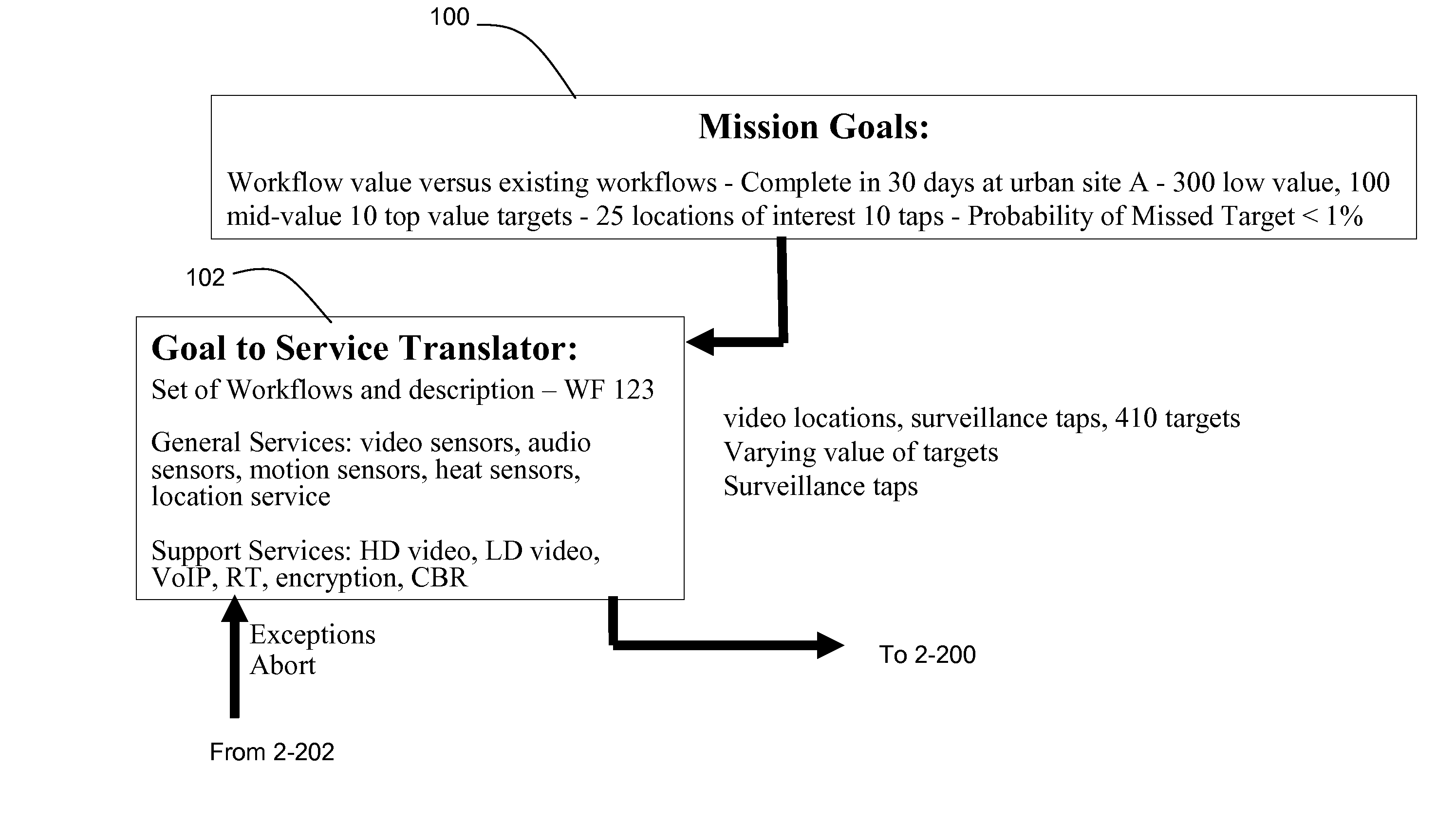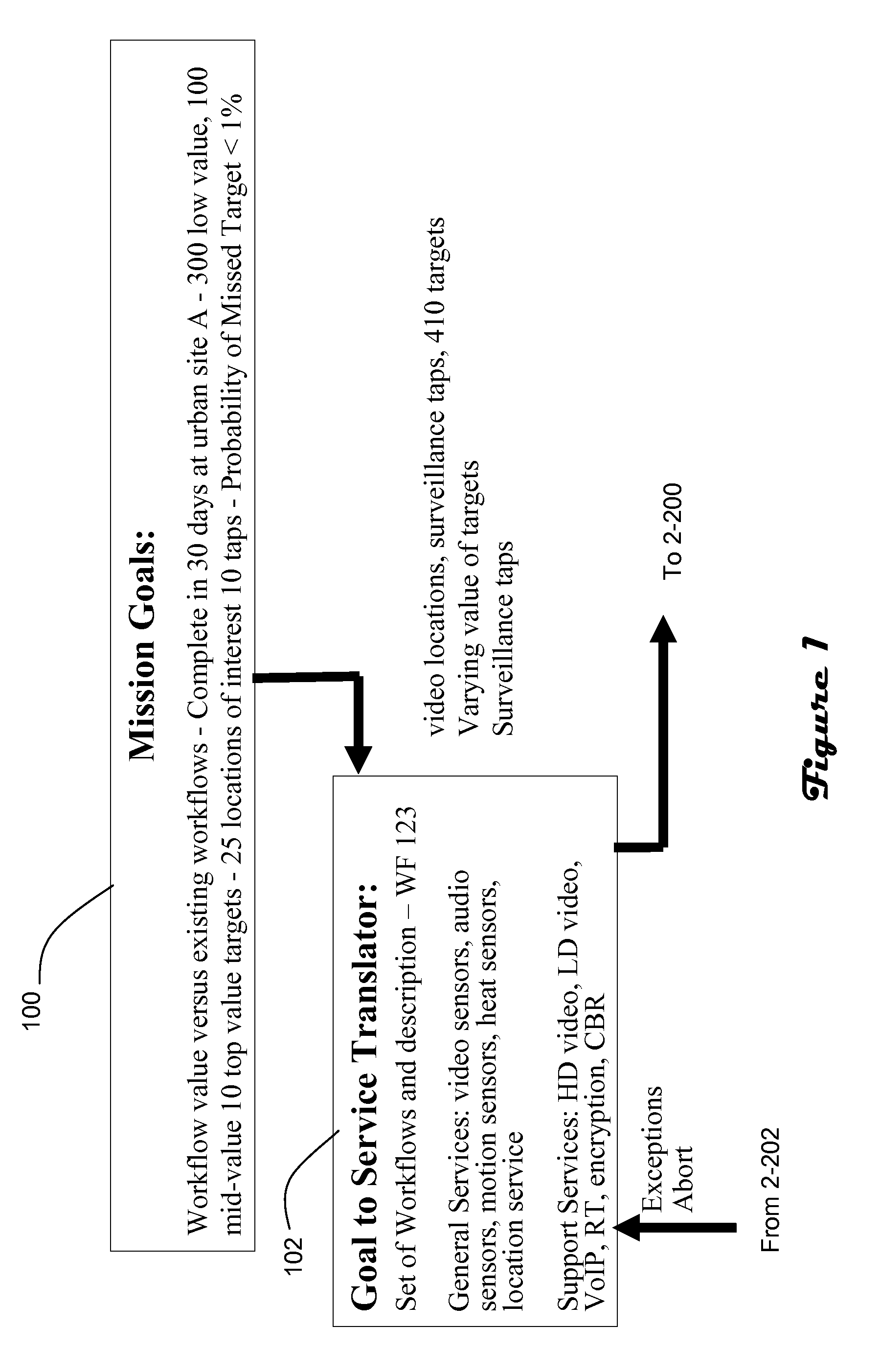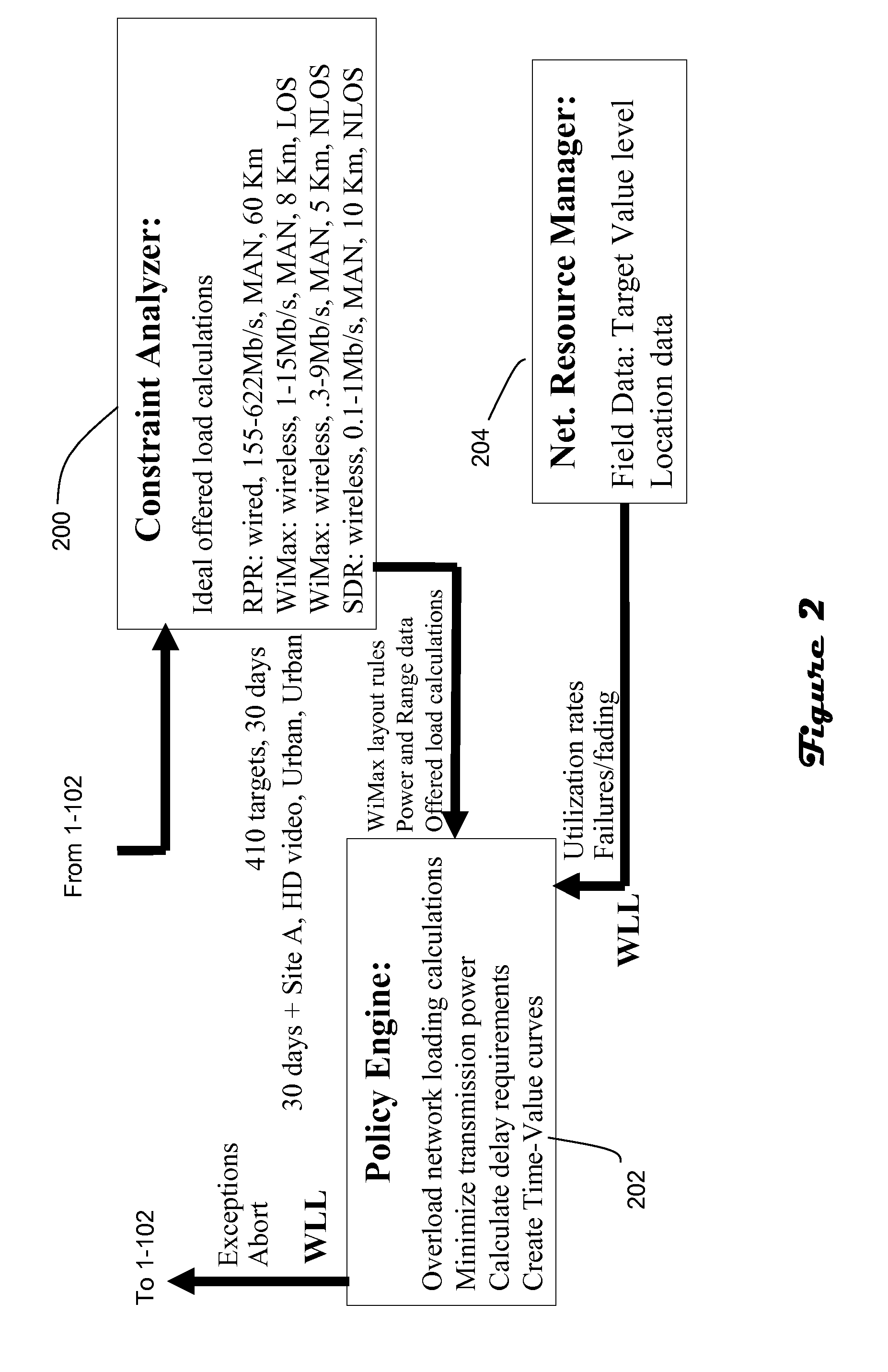Mission goal statement to policy statement translation
a technology of policy statement and mission goal, applied in the field of network resources, can solve the problems of increasing the risk of failure, affecting the stability of surveillance networks, so as to facilitate the adaptation to changing conditions, facilitate the planning and allocation of resources, and improve the reliability
- Summary
- Abstract
- Description
- Claims
- Application Information
AI Technical Summary
Benefits of technology
Problems solved by technology
Method used
Image
Examples
Embodiment Construction
[0010] Referring now to FIGS. 1 and 2, a system for mission goal statement to policy statement translation includes a plurality of modules which may be implemented on one or more network devices, may include dedicated hardware, and may include software processes executed by one or more processors. In particular, the modules include a mission goal definition module (100), a goal-to-service translator module (102), a constraint analyzer module (200), a policy engine module (202), and a network resource manager (204). The system is operative to take high level goal statements as input, and create machine-friendly service templates, network properties and policy statements with which to execute surveillance missions.
[0011] The mission goal definition module (100) and goal-to-service translator (102) are operative in combination to translate high level goal statements to network services. User input from a command center is interpreted by the goal definition module to create a list of p...
PUM
 Login to View More
Login to View More Abstract
Description
Claims
Application Information
 Login to View More
Login to View More - R&D
- Intellectual Property
- Life Sciences
- Materials
- Tech Scout
- Unparalleled Data Quality
- Higher Quality Content
- 60% Fewer Hallucinations
Browse by: Latest US Patents, China's latest patents, Technical Efficacy Thesaurus, Application Domain, Technology Topic, Popular Technical Reports.
© 2025 PatSnap. All rights reserved.Legal|Privacy policy|Modern Slavery Act Transparency Statement|Sitemap|About US| Contact US: help@patsnap.com



